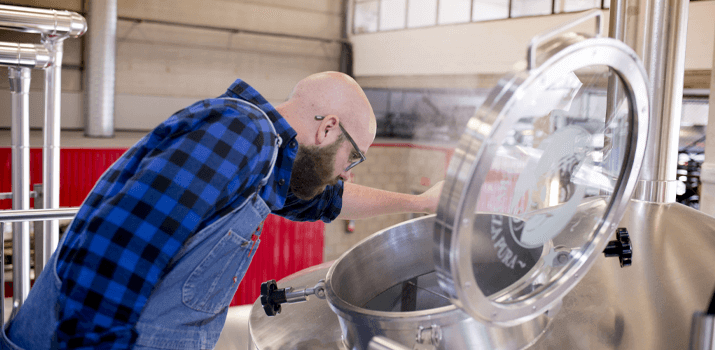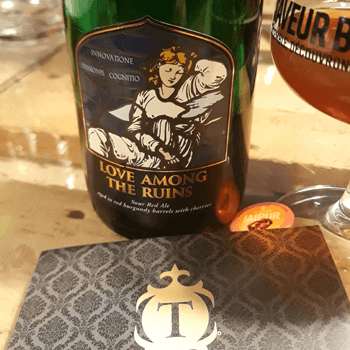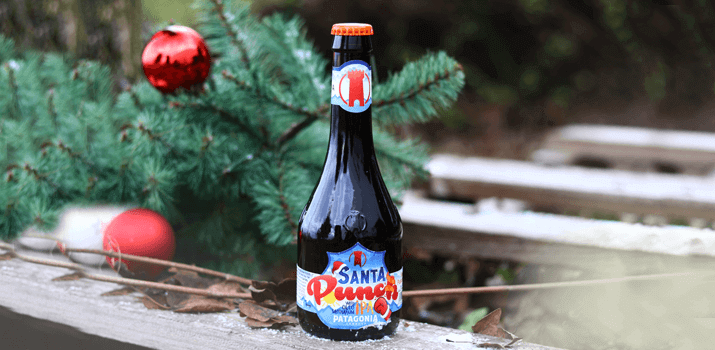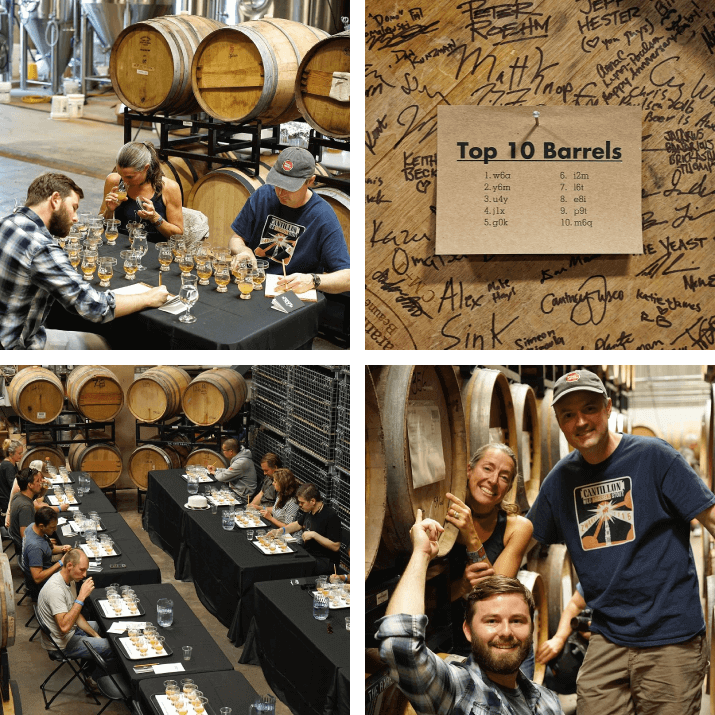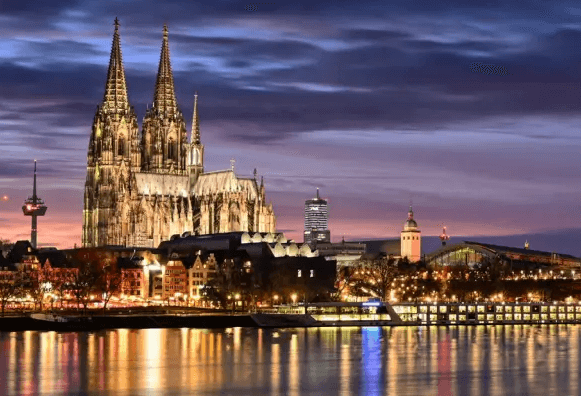
There are few beers so entwined, so steeped in the culture and history of a city, as kölsch is with Cologne, the city Germans call Köln. Its brewers founded the Kölner BrauerKooperation, a brewers’ guild, as far back as 1396. For context, this was the same year Richard II remarried, and when Geoffrey Chaucer was in the middle of scribing The Canterbury Tales. The beers of the late 14th century, of course, would have been unrecognisable from modern kölsch. Today, however, if you walk into the FRÜH am Dom brewhouse in the shadows of Cologne’s enormous cathedral, you’ll be presented with a stange of a clear, golden beer with a soft white head. This is FRÜH kölsch. It is always served in a stangen, a straight 200-millilitre glass with a satisfyingly hefty handle. Then the ritual begins. For each beer you consume, the köbes, as the waiters are called, will put a pencil mark on your coaster. And in FRÜH am Dom, as elsewhere in the city, they’ll continue to bring you fresh glasses of beer until you place a coaster over your empty stangen, signalling time to tot up the pencil marks.
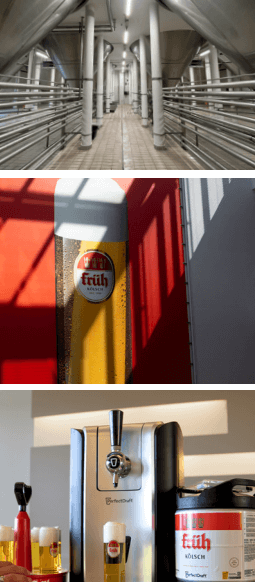
We made our way to the FRÜH am Dom brewhouse after a visit to the FRÜH brewery with our welcoming hosts, excited about launching this classic beer on PerfectDraft. We were fortunate enough to be invited to their headquarters and brewery, where they gave us the full tour. The scale of the place is genuinely impressive, from the size of the facility to the level of care they put into every corner of the building. It’s clear how passionate the team are about their work and the beer they produce.
Back inside FRÜH am Dom, the bustling beer hall was alive with chatter, clinking glasses and sunshine pouring through the windows. The brewhouse was packed, with locals and tourists all soaking up the sun and sipping fresh kölsch. Waiters darted between tables with those iconic FRÜH trays, swapping empty glasses for full ones. We tucked into a brilliant meal and took our time exploring the many different rooms inside the brewhouse, each with its distinct character and charm. A highlight? Watching a fresh keg being tapped and getting to enjoy the very first pour.
The modern kölsch was first created in the late 1800s in response to the encroaching lagers of Bohemia. Local brewers made it golden and hoppy, with a delicate bitterness. It was, and remains, top-fermented like an ale (lagers are usually bottom-fermented). Still, like a lager, FRÜH Kölsch undergoes a slow brewing and maturing process that gives it a clean, delicate and dry finish.
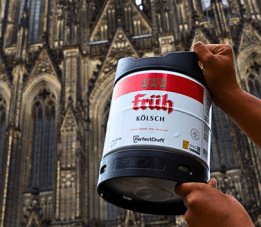
Peter Josef Früh was part of the original Cologne movement to produce beers to fight back against the lagers. In 1904, he founded a new brewery, Cölner Hofbräu FRÜH, in a city restaurant, and it was formally established in 1907. It was in the 1960s that the brewery as we know it today was reborn, back under the tutelage of the family. In 1969, it introduced kölsch in a bottle, and in 1987, a new brewery was built on the outskirts of the city. Today, the fifth generation of family members runs what is the largest brewery in Cologne. Oh, and 2025 sees the launch of FRÜH on PerfectDraft.
Cologne itself is a city that knows how to celebrate its beer. The colours of the city – red and white – are everywhere, from flags to football shirts to tiny details in the bars and streets. It gave us a deeper understanding of just how much FRÜH means to the people here, and why it’s such a big deal to be bringing it to PerfectDraft.
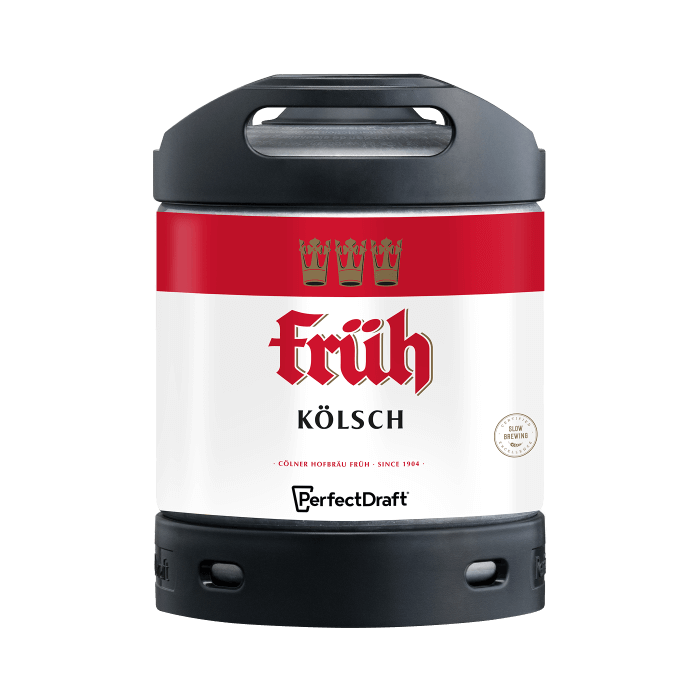
Any opportunity to visit Cologne is an opportunity to see just how important a beer can be to the identity of a city. In its rustic taverns, your köbes, dressed in the traditional blue knitted jacket and blue apron, will, perhaps brusquely, drop down another round of beers. At this point, take a sip and savour the taste of a culture. No wonder FRÜH was once called ‘the Foreign Minister of Cologne’.
Discover other articles : Talking shop (tales from the community) and London Pride (The pride of London Town)

